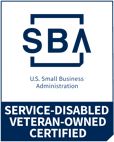This blog is based on Episode 10 of our GovEd Talks Video series: Speed up Change Management at the Speed of Change by Dr. Raman Attri, Training and Learning Manager at KLA.
In today's fast-paced business environment, the ability to adapt to change swiftly is a critical factor for success. Charles Fred, in his book Breakaway, emphasizes the significance of speed as a devastating competitive weapon in the modern era. Whether your part of an NGO, a governmental agency, or a multinational corporation, the truth remains—speed is a universal necessity. The recent global pandemic highlighted the urgency of adapting to new ways of working, and organizations worldwide had to make rapid adjustments to their operations.
As you introduce changes within your organization, such as new infrastructure, technologies, work practices, or remote work policies, effective change management becomes crucial. The goal is to ensure that these changes are adopted quickly and seamlessly, minimizing disruptions to your business, services, or operations. In this blog, we'll explore research-based insights on how to accelerate change management and cultivate proficiency in your workforce.
The Path to Proficiency
To achieve successful change management, employees must master new tasks and behaviors, utilizing them to produce the desired outcomes. For example, a financial analyst adopting a new software system must not only learn and master the tasks but also consistently demonstrate the software's use to fulfill their job responsibilities. However, the ultimate goal is proficient performance—reliable, consistent, and independently productive outcomes.
Proficiency is the sweet spot where you want your employees' performance in adopting new changes to be consistently high, month after month. It's not a one-time achievement but a repeatable and dependable level of performance, regardless of job grade. Achieving proficiency is the primary objective of change managers, and it aligns with the stated goals of change management initiatives.
The ADCAR Model of Change Management
Change managers are familiar with the ADCAR model—Awareness, Desire, Knowledge, Ability, and Reinforcement. This model guides the process of change management, from creating awareness about impending changes to reinforcing new behaviors after the changes are implemented.
The challenge lies in reducing the time it takes for employees to reach proficiency in the new skills, behaviors, and functions introduced by the changes. The hypothetical proficiency time graph illustrates the target proficiency and the typical path employees might follow if left on their own—the red line. The goal is to lift that curve and follow the green line, reaching proficiency sooner.
Research-Based Insights
To understand how organizations accelerate the time to proficiency, a comprehensive research study was conducted with leaders from diverse sectors, including Fortune 500 corporations, government agencies, NGOs, military and defense organizations, and community services. The key question posed was, "How did you speed up the time to proficiency of your workforce?"
The core answer emerged as a simple analogy: nurturing employees through a development and educational support system, like raising children. Building proficient teams ready to adopt changes requires a nurturing, educational, and supportive environment—an ecosystem designed for proficiency.
The Three Views of a Proficiency Ecosystem
1. Employee-Centric Approach: Placing employees at the center of the ecosystem involves understanding their needs, concerns, and learning preferences. Tailoring change management programs to align with the individual's pace and providing continuous support and feedback can significantly accelerate the journey to proficiency.
2. Manager-Centric Approach: Managers play a pivotal role in guiding and reinforcing change. Equipping managers with the necessary skills and tools to support their teams, providing ongoing training, and fostering a culture of open communication can create an environment conducive to rapid proficiency.
3. Technology-Centric Approach: Embracing technology as a central component of change management operations can streamline the learning process. From user-friendly training modules to integrated systems that support new workflows, leveraging technology enhances the overall proficiency ecosystem.In conclusion, accelerating change management and reducing time to proficiency require a holistic approach. By nurturing employees, empowering managers, and leveraging technology, organizations can create a proficiency ecosystem that adapts to the speed of business. As the business landscape continues to evolve, the ability to navigate change efficiently remains a cornerstone of sustainable success.
If you're interested in learning more about Change Management, consider enrolling in our upcoming course Managing Strategic Change. Our course provides the know-how to plan and implement change initiatives successfully by helping each affected employee to transition to a new end-state successfully.













